Chris Drury has been the president and general manager of the New York Rangers for only about two years, having been promoted to the dual roles after the stunning firings of John Davidson and Jeff Gorton late in the 2020-21 season. The former Rangers player and childhood Blueshirts fan, however, has been plenty busy since in reshaping the team in his image.
Though it may seem a bit early to start evaluating those moves, the lifespan of an NHL GM’s tenure can often be short (Davidson, like a Drury a former Ranger and beloved figure in team history, held his job as team president for less time than Drury has been in charge). So a look at what the Trumbull, Conn. native has accomplished so far seems appropriate, given the precarious nature of people in his position.
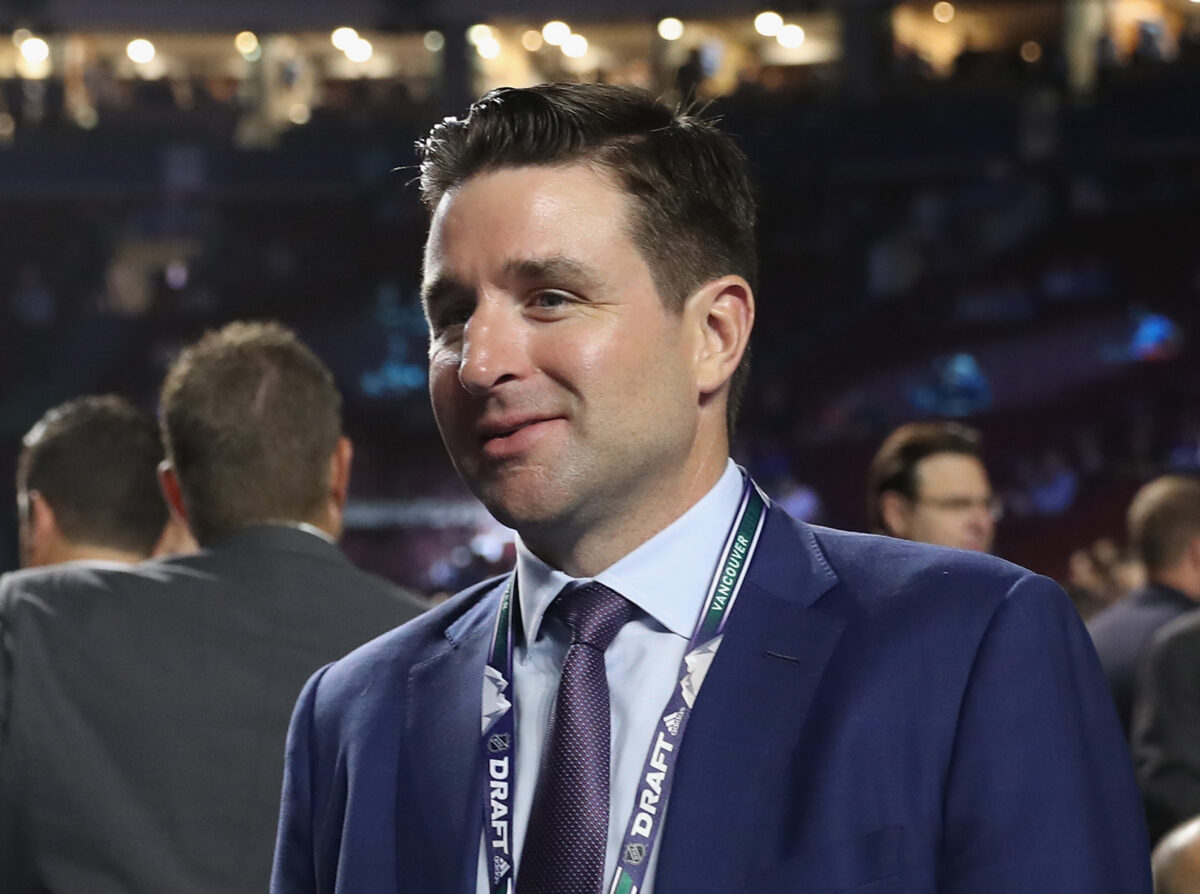
Here’s a list of Drury’s five best and worst decisions since ascending to the top personnel job 26 months ago.
Best
1. Signing D Adam Fox to a Contract Extension
Gorton scored this heist of a trade back in April 2019, sending what ended up being two second-round picks to the Carolina Hurricanes for the rights to Adam Fox, who would quickly grow into a core member of the current roster and go on to win the Norris Trophy in 2021. It was Drury, however, who locked him up long-term, and at a price that should prove to be a team-friendly one over the life of the contract.
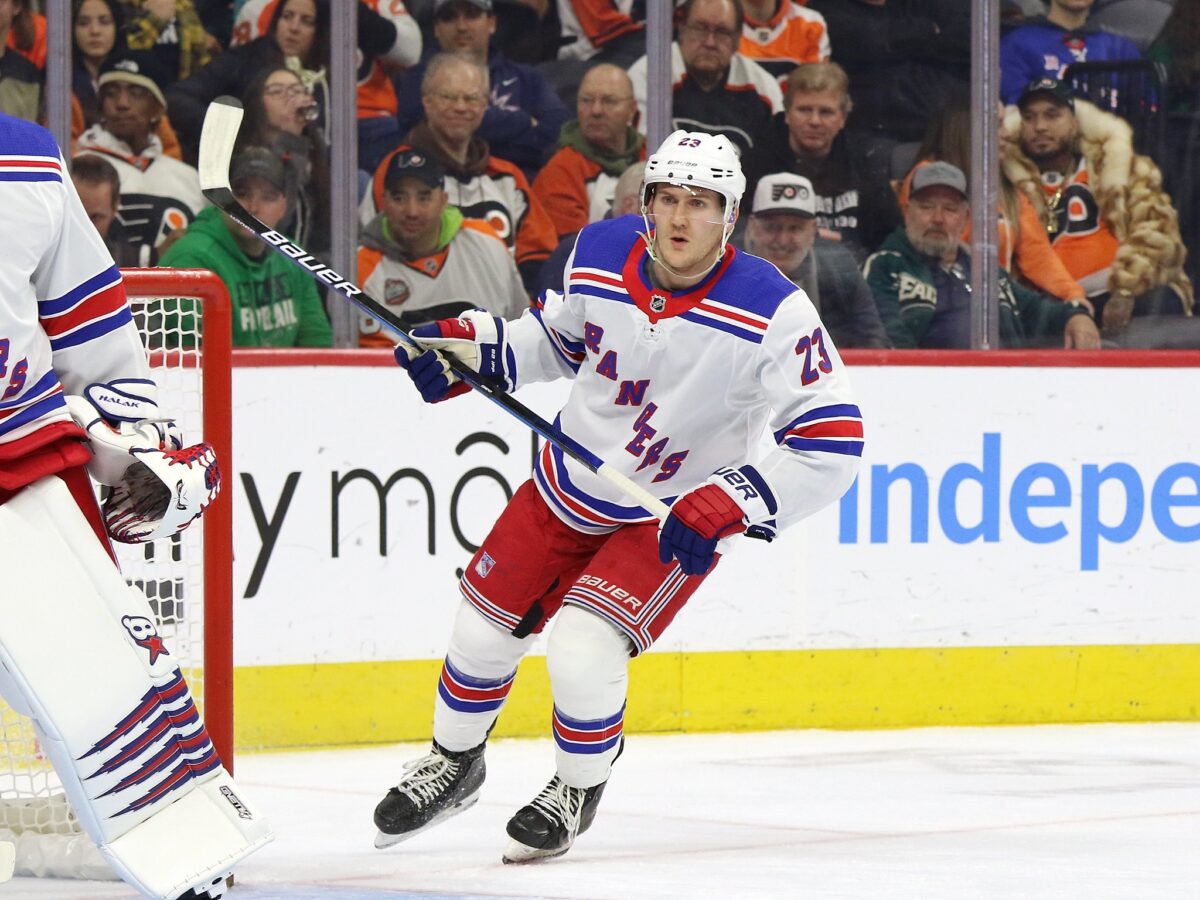
Fox’s seven-year, $66.5 million extension, inked Nov. 1, 2021, was unquestionably affected by fellow star defenseman Cale Makar’s six-year, $54 million pact signed with the Colorado Avalanche in July of that year. Still, with an average annual value of $9.5 per season, Fox’s deal should prove to be advantageous to the Rangers with the salary cap poised to start rising substantially again after the coming season – and the cost for top defensemen going up accordingly. Drury deserves credit for not overpaying in getting a young team cornerstone secured through 2028-29.
2. Acquiring Andrew Copp, Frank Vatrano, Tyler Motte and Justin Braun at the 2022 Trade Deadline
At his first trade deadline since ascending to the GM role, Drury exhibited the same fearlessness and determination with which he played 12 years in the NHL, adding four players to the roster of a Rangers team that would finish with 110 points in an unexpectedly outstanding season. Unwilling to sit back, Drury saw an opportunity to make a deep playoff push and fortified his top-six forward group with Andrew Copp and Frank Vatrano, bolstered the bottom six with the speedy and pesky Tyler Motte, and solidified the third defense pair with Justin Braun.
Though the moves didn’t deliver an elusive championship, the Blueshirts did indeed make a run at one, coming within two victories of the Stanley Cup Final. All four players contributed. Copp delivered 18 points and a plus-13 rating in 16 regular-season games, and 14 points in 20 playoff contests. Vatrano had eight goals and five assists in 22 games in the regular season and 13 points in the postseason, while Motte’s spark and Braun’s steady play while paired with rookie Braden Schneider were also factors in making it to the Eastern Conference Final.
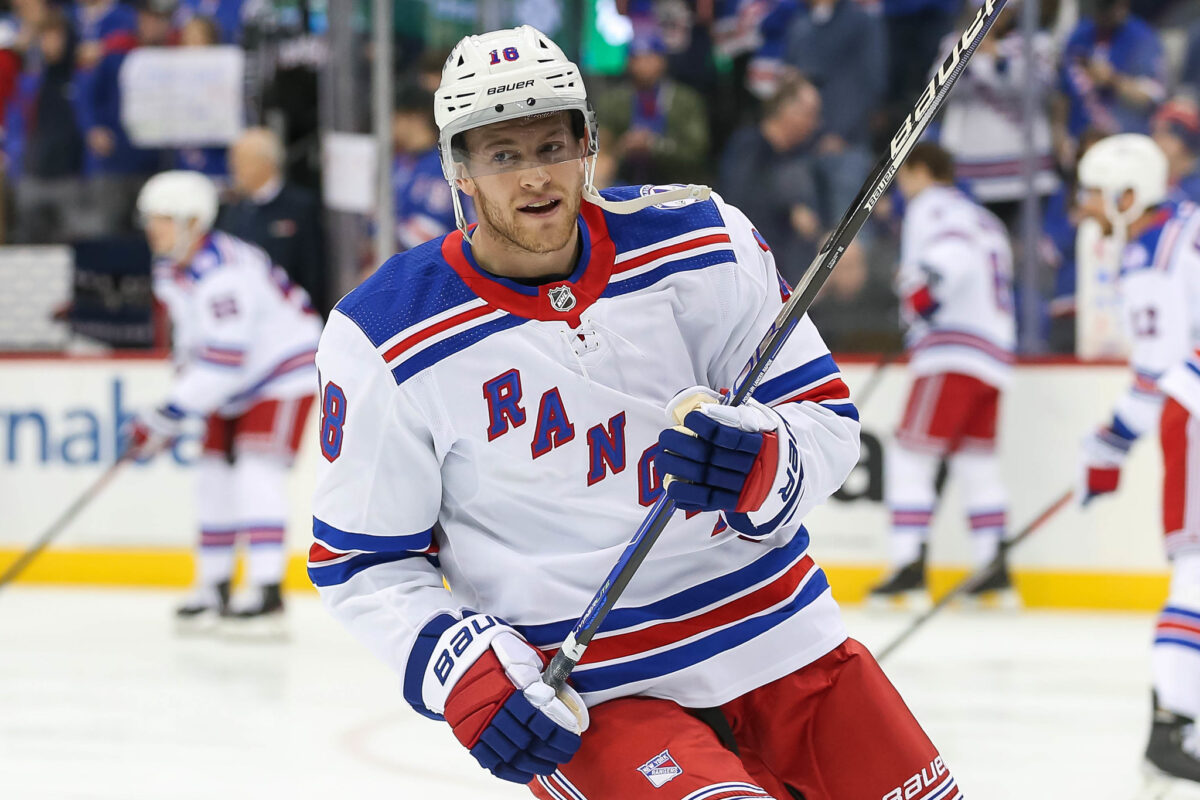
Burnishing the reviews on the four trades was the fact that all were for pending free agents, critical given the tight cap situation facing the Rangers that offseason, and Drury’s ability to execute the deals for relatively little in return compared to the value the additions provided. Only Copp proved expensive; the GM gave up what turned out to be a 2022 first-round pick and a 2023 second-rounder, along with forward Morgan Barron and a fifith-rounder. Vatrano, a perfect fit as a shooter on the top line with Chris Kreider and Mika Zibanejad, was obtained for a fourth-rounder, while Motte also cost only a fourth-rounder and Braun a third.
3. Signing Mika Zibanejad to a Contract Extension
An argument can be made that Mika Zibanejad’s eight-year, $68 million deal that was inked Oct. 9, 2021 and will take him through his age-36 season was too long. Yet Drury’s negotiating skills were on display again here, getting another one of Gorton’s trade steals to commit for the long haul at an AAV that was certainly lower than what Zibanejad would have received on the free-agent market in the summer of 2022.
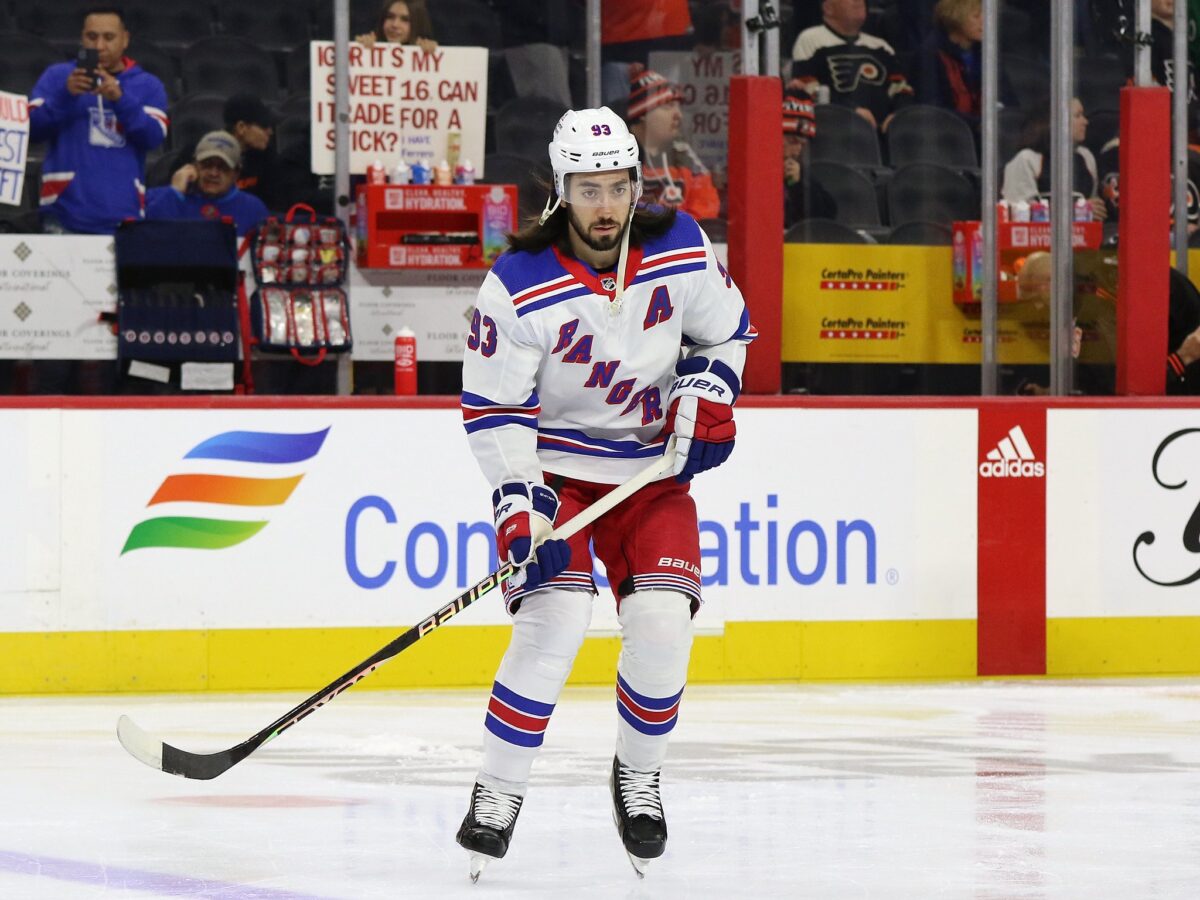
Zibanejad, whose 91 points last season were a career high, is the No. 1 center the Rangers struggled for years to find – even through their Cup-contending period of the early and mid-2010s. Drury’s ability to get him signed for a reasonable cost one year ahead of Zibanejad hitting unrestricted free agency, and who happens to be a rare commodity in the NHL, represents impressive work by the GM.
4. Signing Filip Chytil to a Contract Extension
Filip Chytil’s four-year, $17.75 million pact that he signed in March 2023 is more than a very good contract for the 23-year-old center – it marks a commitment to a rising young player that the Rangers have waited for to arrive as difference-maker since drafting him 21st overall in 2017. If Chytil, who recorded career highs of 22 goals and 23 assists last season, can grab the No. 2 center spot in 2023-24, the Rangers will be paying only $4.437 million per season for a top-six player with exceptional size, skating ability and an emerging scoring touch.
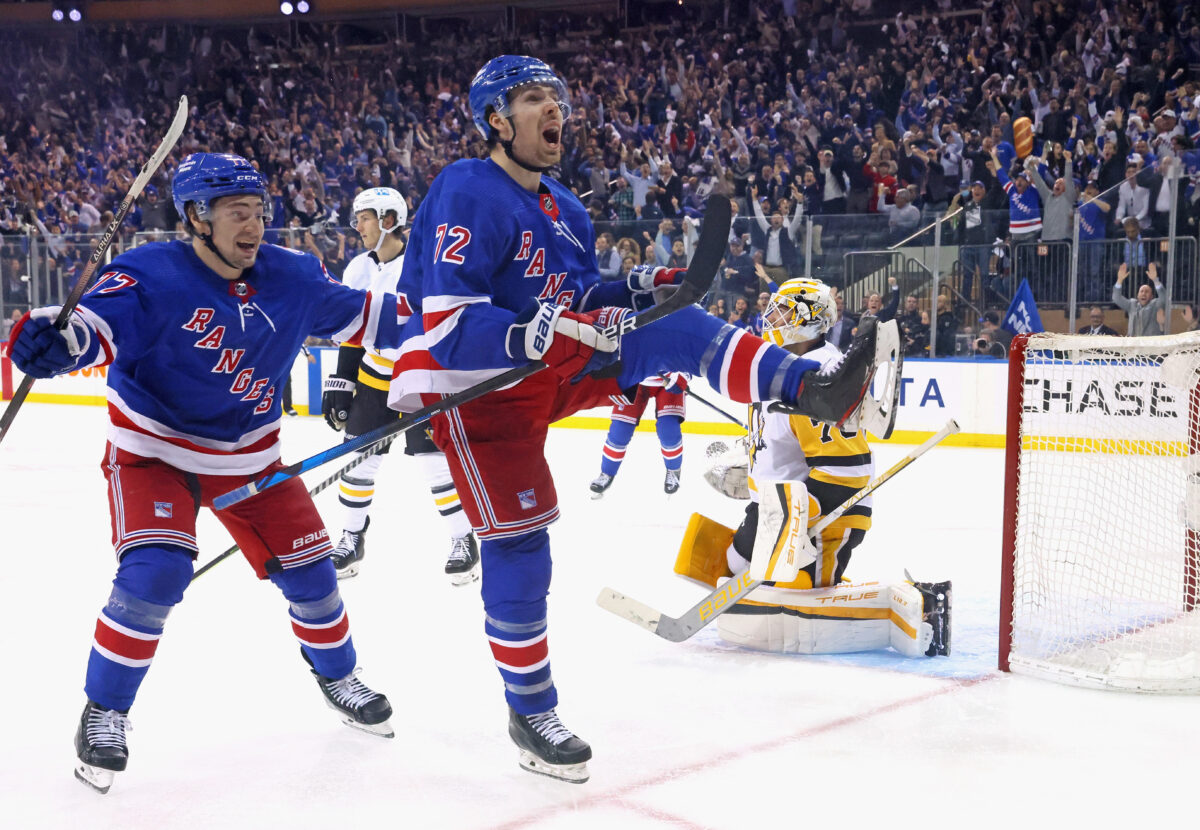
Drury’s recognition of Chytil’s value led him to getting the Czech Republic native signed to an equitable contract for both team and player, rather than going to arbitration with Chytil or settling on a one-year deal this summer. That would have effectively kicked the can down the road, probably making Chytil more expensive next season and potentially creating uncertainty in the relationship.
5. Maintaining a First-Round Pick in the 2023 Draft
Drury boasted two first-round picks in June’s draft, the results of his September 2022 trade of former first-round pick Nils Lundkvist to the Dallas Stars. While the young defenseman could eventually make the Rangers regret the deal, acquiring a first-round selection for a player who had shown little in his limited time in the NHL gave Drury key trade capital that created a better chance for him to select in the opening round of what was considered a loaded 2023 draft.
Drury was expected to use at least one of the first-rounders in a deadline deal, which he did in sacrificing the Stars’ pick to acquire Vladimir Tarasenko and Nikko Mikkola from the St. Louis Blues in early February. However, he refused to include the Rangers’ own first-rounder in a trade for Chicago Blackhawks star Patrick Kane later that month, securing the winger for a conditional second-round choice and two lesser assets.
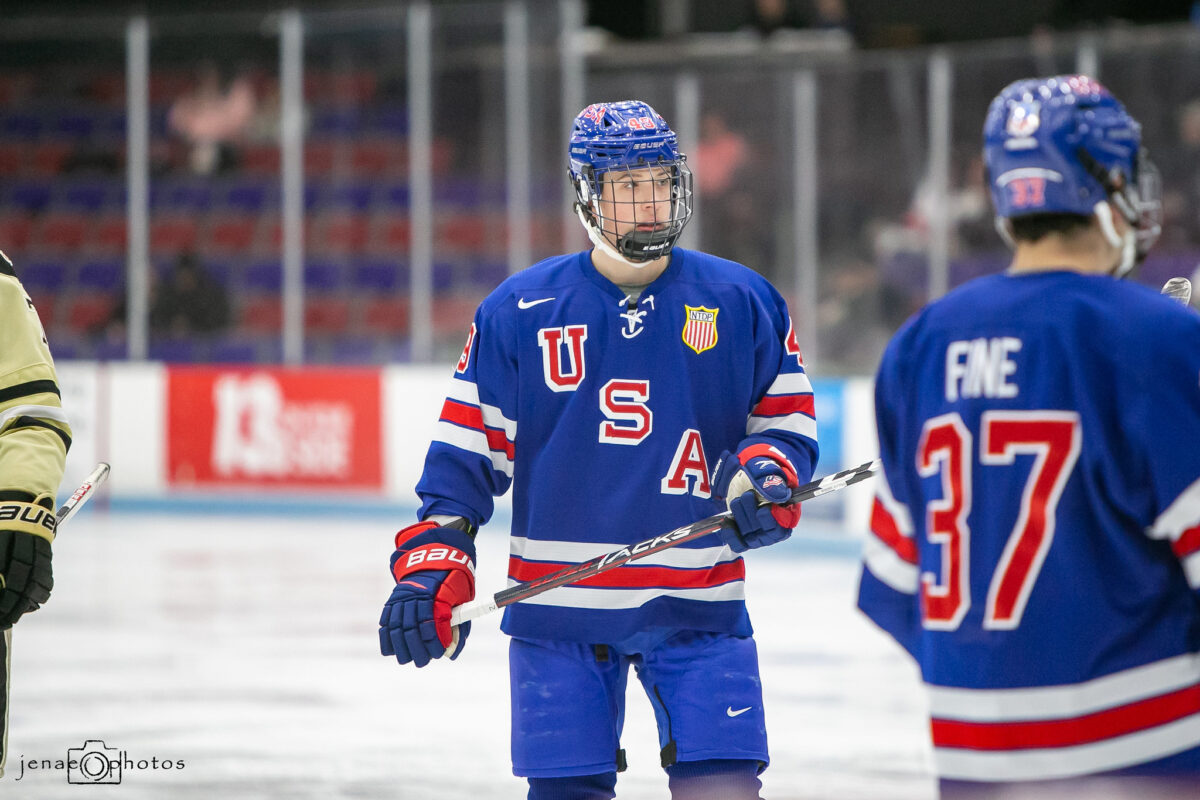
Drury used the remaining first-round pick on Gabriel Perreault, a highly-regarded forward prospect who is generally viewed as a future top-six staple with exceptional offensive skills, at 23rd overall. Perreault’s selection was largely considered to be a steal at that spot, fulfilling Drury’s steadfast intention to have access to first-round talent in the highly-regarded 2023 talent pool. It was also no small matter that Drury insisted the pick the Blues were to receive for Tarasenko would be the lesser of the Stars’ and the Rangers’ picks – which resulted in the Blueshirts being in position to grab Perreault at 23, while St. Louis ended up with the 29th choice.
Worst
1. Trading Pavel Buchnevich to the Blues
This disastrous move is well-covered territory both amongst the Rangers’ fan base and in this space, but unless Drury delivers a Stanley Cup during his tenure, it’s possible that his trade of Pavel Buchnevich to the Blues on July 23, 2021 could become his Rangers legacy. In his first offseason as GM and facing a salary-cap mess not of his own making, along with something of an informal mandate from ownership to toughen up the lineup (more on that later), Drury made a personnel move that in retrospect appears ill-thought out at best and borderline negligent at worst.
It’s the Buchnevich deal that seems to bring daily agony to the Blueshirts faithful. With the home-grown right winger coming off a breakout season in which he delivered 20 goals and 28 assists in 54 games of the pandemic-shortened 2020-21 season, and due a new contract as a restricted free agent, Drury chose to sacrifice Buchnevich in the name of cap space, acquiring forward Sammy Blais and a second-round pick from St. Louis.
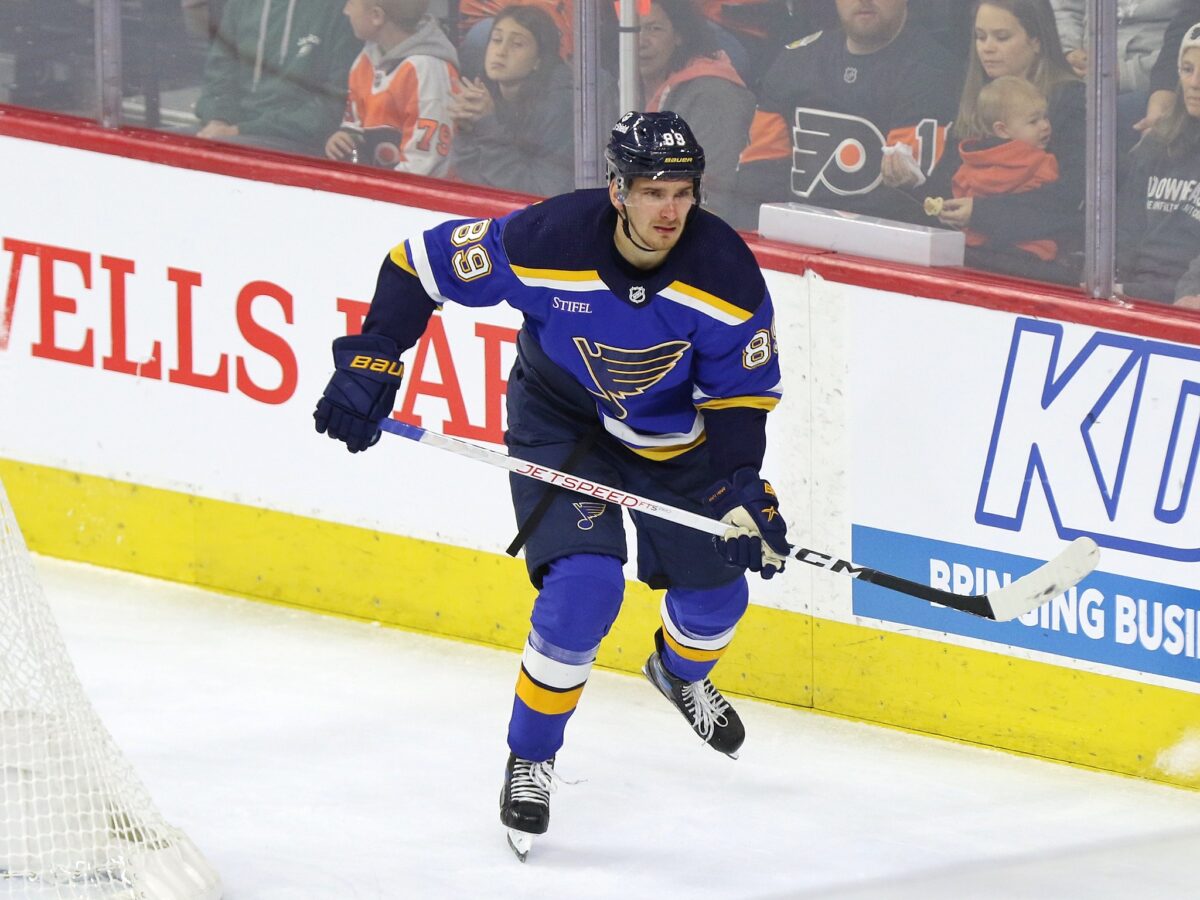
You know the rest – Buchnevich’s 200-foot game not only continued to develop, he became a point-per-game player with the Blues, recording 143 in 136 games over two seasons in the Gateway City. For the Rangers’ part, they have struggled ever since to fill the hole on the right side created by Buchnevich’s departure. At 28, Buchnevich, with two years remaining on the four-year, $23.2 million pact he signed with St. Louis which now looks like a bargain, is a key cog in a Blues core that includes fellow 20-somethings Robert Thomas and Jordan Kyrou.
The fact that Blais endured an injury-marred, frustrating 54-game stint in New York in which he didn’t score a goal before being traded back to St. Louis in the Tarasenko deal, and the second-rounder was used in the Copp trade, makes it that much worse. You can bet Drury would love to have this one back.
2. Signing Barclay Goodrow as a Free Agent
This move actually occurred one day before Drury sent Buchnevich packing, delivering the first of a one-two punch that is still having a profound impact on the Rangers’ roster. Let’s review: The Tom Wilson Incident of May 3, 2021, proved to be the spark that led to the firings of Davidson and Gorton two days later and carried over into the offseason. With the expectation to make the Rangers into a brawnier outfit, Drury undertook a series of transactions that brought in Blais, Dryden Hunt, Jarred Tinordi, Ryan Reaves, Patrik Nemeth and Goodrow.
The versatile, heart-and-soul forward had played an integral role for the back-to-back Stanley Cup champion Tampa Bay Lightning. Drury made his interest in Goodrow clear, acquiring the pending unrestricted free agent’s negotiating rights for a 2022 seventh-round pick that July 17. Five days later, the Rangers inked Goodrow to a six-year, $21.8 million contract.
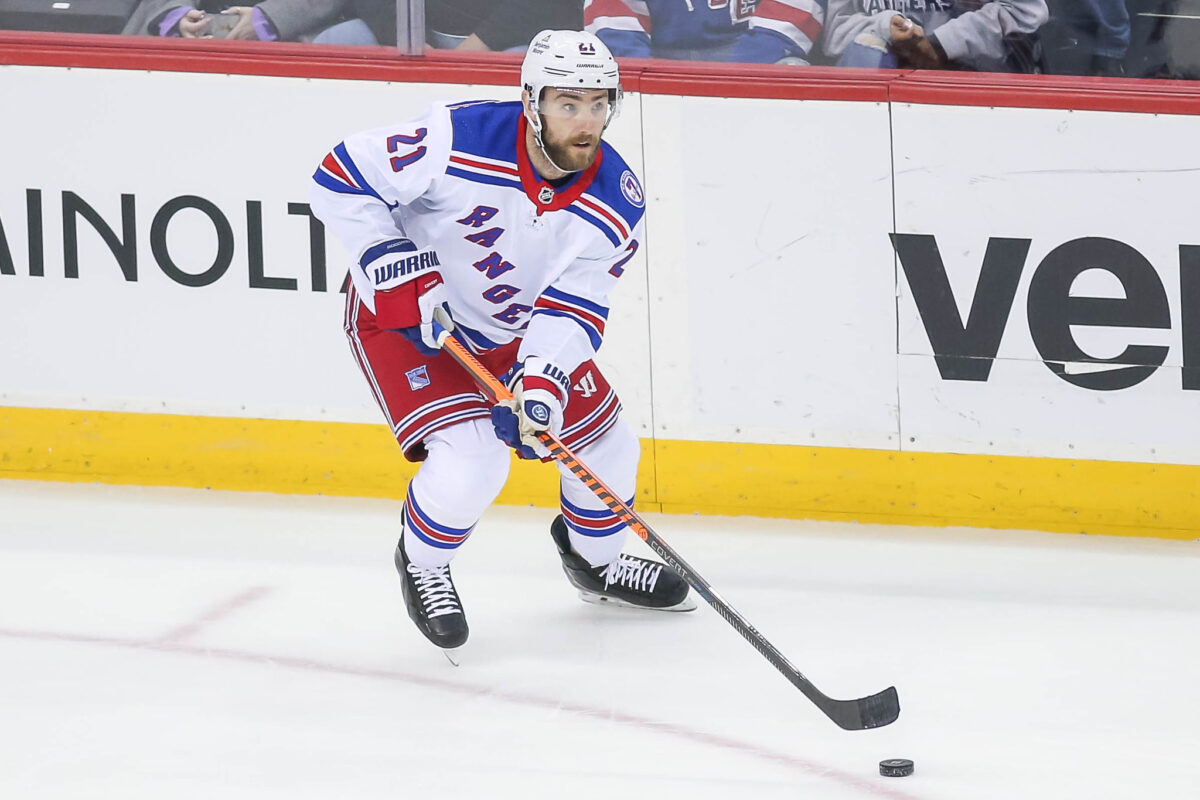
The $3.6 million AAV looked at the time like an overpay for a player that was very useful but not a star, and that’s proven to be the case. Goodrow has been as advertised in his two seasons in New York, but his contract has been a hindrance to a roster that remains capped out. The Rangers declined to buy out the 30-year-old this summer and there’s no evidence they’ve been shopping him, but Goodrow seems unlikely to make it anywhere close to the end of his deal with the Rangers. With a 15-team no-trade list and a cap hit that makes it difficult for any contending team to take on his contract, the signing has become predictably regrettable. Good idea, bad execution.
3. Trading for Kane
This was at the very least a well-intentioned transaction, Drury jumping at the opportunity for a three-time Cup-winner who was set on being traded only to the Rangers and who wouldn’t cost much in a deal. Yet Drury’s conviction to add Kane for the Blueshirts’ playoff run eventually started to feel like a white whale kind of pursuit, the team being essentially held hostage in the weeks before the trade deadline because of the wild salary-cap and lineup machinations required to add the 2016 Hart Trophy winner in a three-team deal Feb. 28, 2023.
Related: Rangers Get Great Value With Blake Wheeler Deal
While Kane had his moments in New York, producing 18 points in 26 regular and postseason games, it became clear immediately that he wasn’t a great fit for the lineup or on the power play, with then-coach Gerard Gallant shoehorning him onto the first unit without great results. Kane proved to be overkill after the Rangers had acquired Tarasenko weeks earlier, and in hindsight, Drury should have been looking to add size and grit with his remaining cap space, not more skill to a team already awash in it.
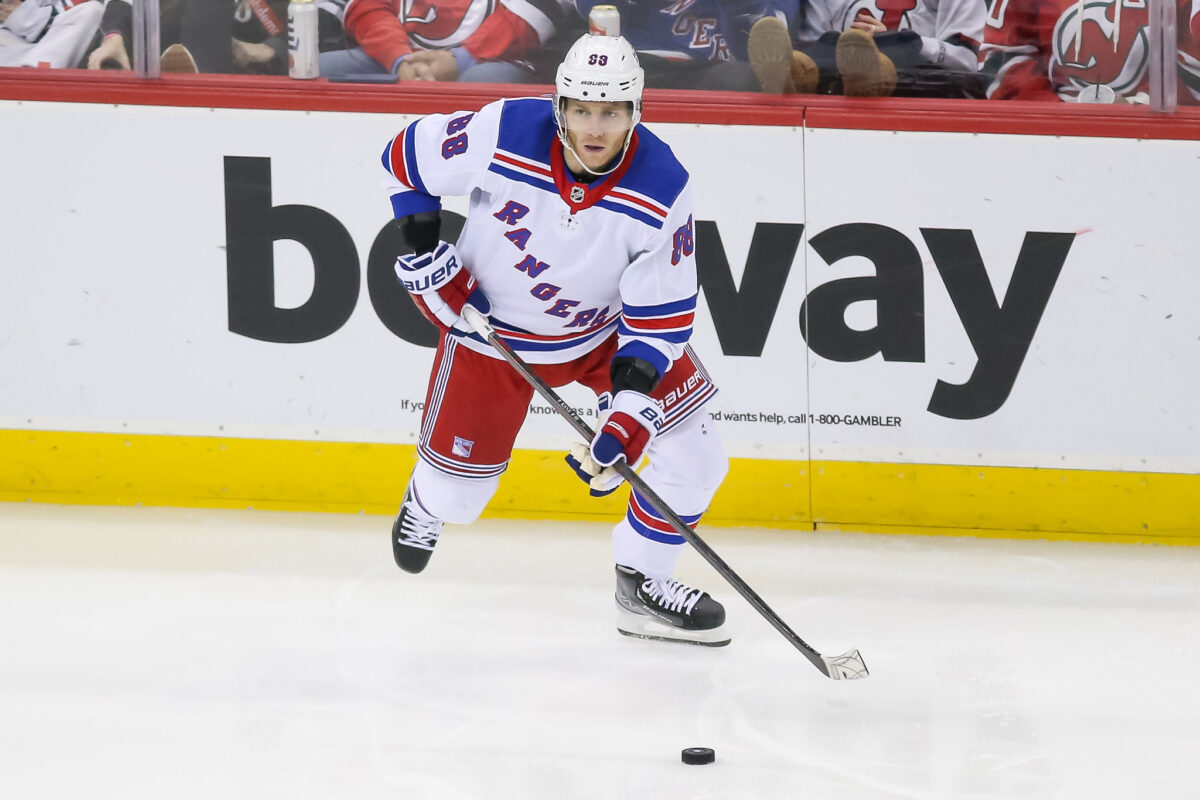
Making matters worse, Kane’s hip issues – known about when Drury traded for him – proved to be considerably worse than had been reported, with Kane telling reporters after the Blueshirts’ seven-game loss to the New Jersey Devils in the first round that he knew going into the series that he was a shell of himself who wasn’t going to be able to help much.
It would be wholly inaccurate to claim that Kane’s acquisition derailed the Rangers season. His addition, however, never really worked, and the Rangers followed Drury’s dogged pursuit of his acquisition by trying endlessly to make it all click. The GM hardly got fleeced, giving up only a second-round pick, a fourth-rounder and defenseman Andy Welinski to Chicago, but this ended up being a misguided move that didn’t improve the Blueshirts’ 2023 championship aspirations at all.
4. Signing Nemeth as a Free Agent
The 6-foot-4, 230-pound left defenseman was another pickup during the “Get Tough” Rangers summer of 2021, and the Sweden native supposedly came with the added bonus of an expected blue-line pairing and mentorship with countryman Lundkvist, for whom the front office had high hopes at the time. Yet Nemeth, who inked a three-year, $7.5 million contract, delivered mostly uninspired play, and he quickly became a target of the fan base’s ire after some sloppy efforts in his own end.
The expected third defense tandem never found its footing. Nemeth missed a stretch of games after contracting COVID and dealt with the lingering effects for much of the season, while Lundkvist played only 25 games with the Rangers before being sent to Hartford of the AHL, his size and inexperience with the North American game making him a defensive liability.
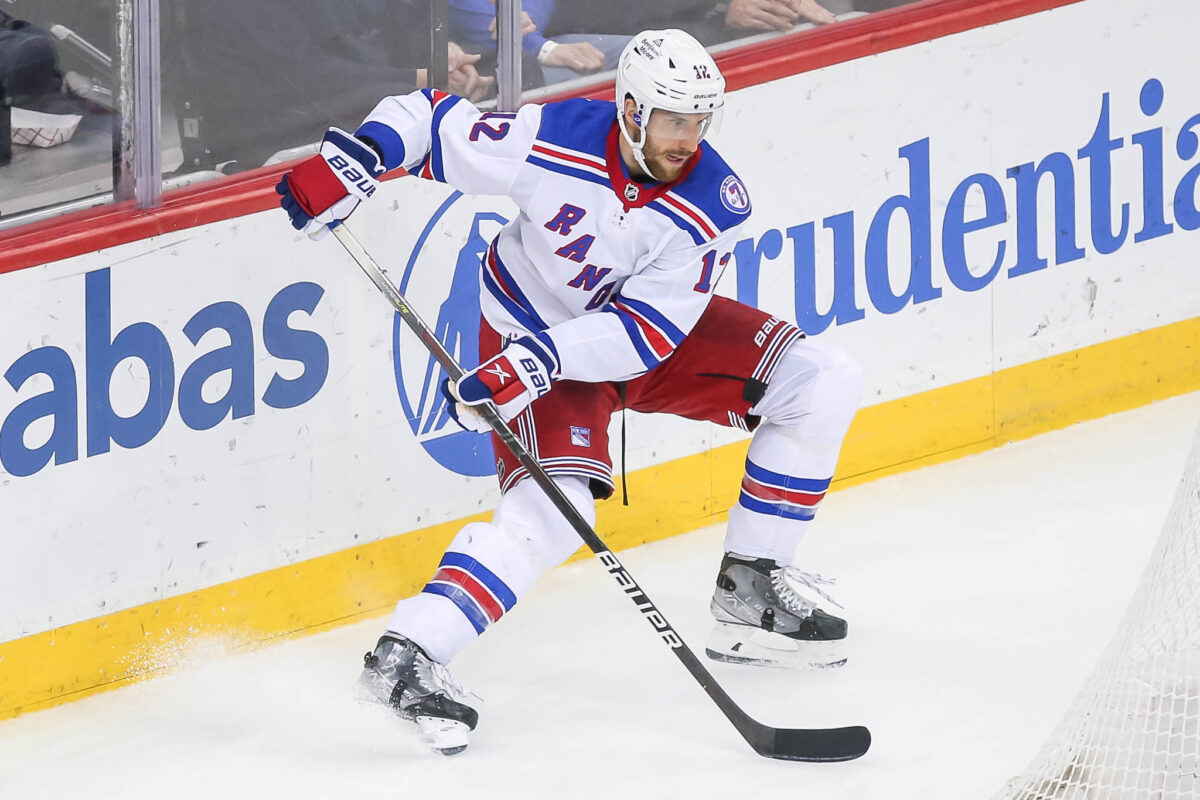
Drury did well in acknowledging his mistake on the signing after one season, but the cost to rid the Rangers of Nemeth’s onerous deal was steep – attaching a 2025 second-round selection and a conditional 2026 second-rounder to Nemeth in order to send him to the NHL Contract Mistake Depository Arizona Coyotes, who gave the Blueshirts only minor-league defenseman Ty Emberson in return. Happy to be rid of Nemeth, this trade isn’t bemoaned much amongst the fan base as a really lopsided one, but it should be.
5. Signing Vincent Trocheck as a Free Agent
This transaction places at the bottom of the list because Trocheck was an effective player in his first season on Broadway – 64 points in 82 games, a 56.1 percentage on faceoffs, the speedy, edgy play the Rangers thought they were getting in the veteran center. The problem arises from the contract – a seven-year, $39 million pact that has and will continue to have a major effect on the club’s salary cap for quite some time – and which might prove to be redundant in short order.
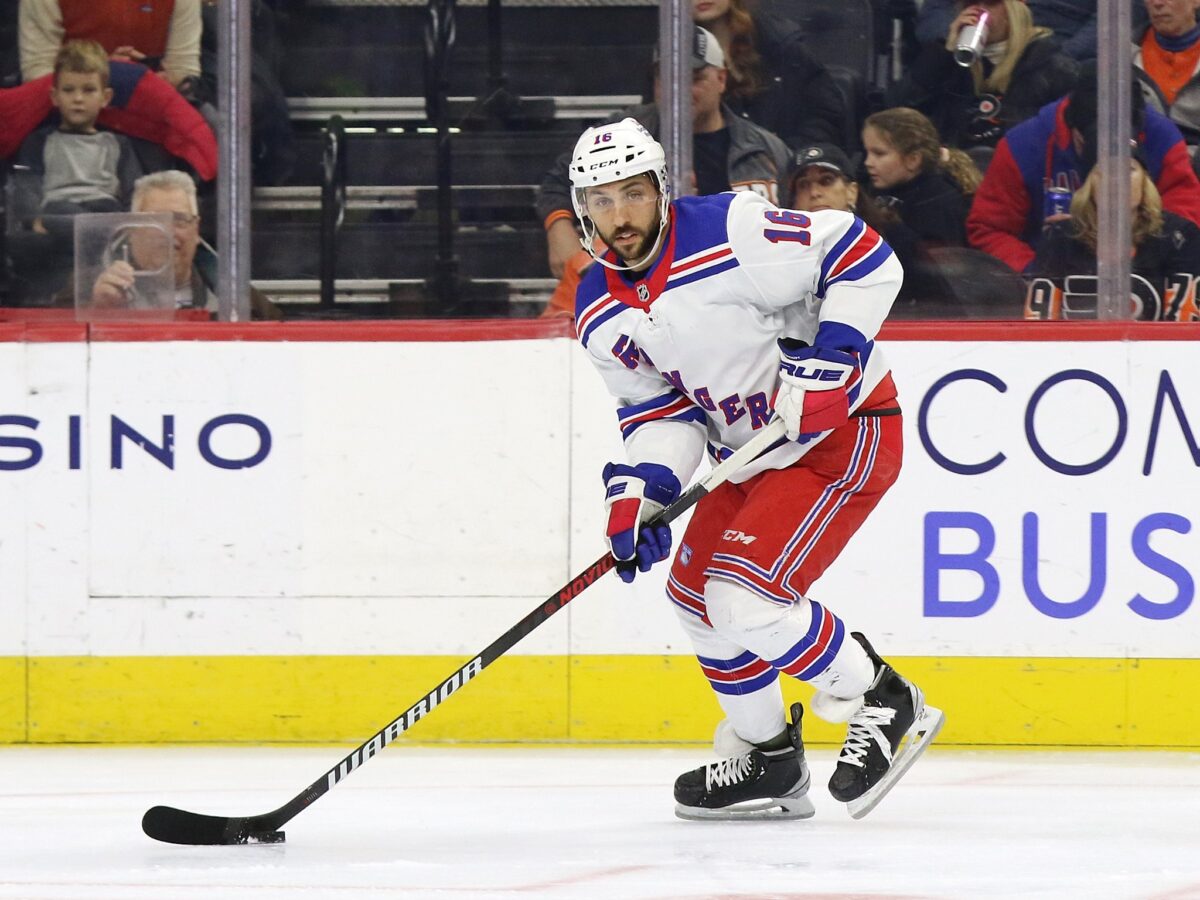
Despite Chytil’s apparent long-awaited breakout performance during the 2022 playoffs, Drury was unwilling to risk him being again unready to assume the No. 2 center spot in 2022-23, and he signed Trocheck – a Gallant favorite – long-term to handle the role. While Trocheck was good, Chytil showed that his postseason performance wasn’t a fluke with his career-best season. Lacking depth at right wing and with more cap pain in store over the next few offseasons, the Rangers might have been considerably better off with Chytil manning the middle on the second line and Trocheck’s money being used for other roster improvements.
Drury’s Short Legacy Contains More Bad Than Good
It’s far too early for Drury to be fully judged on his time running the Rangers. Yet he’s been an active and seemingly fearless executive in his brief tenure, and has wasted little time in putting his stamp on the team.
While his long-term signing of three core players, aggressive 2022 deadline trades and 2023 draft effort deserve kudos, the negatives outweigh the positives to this point. Highly-regarded but young and inexperienced when he was promoted from associate GM two years ago, Drury’s missteps have been significant. The sacrificing of Buchnevich still seems short-sighted from a rookie personnel head attempting to navigate an extremely tight salary-cap picture. And while he inherited that problem, Drury hasn’t done anything to improve it with the signings of Trocheck and Goodrow, both of which look excessive.
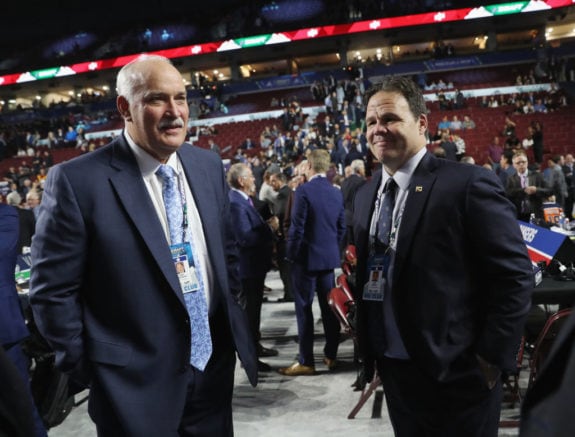
Drury’s recognition to go for a run at a championship in 2022 speaks well for his feel for his team, and the trade for Tarasenko last season was a good one. He’s presided over two 100-plus point seasons, and perhaps the GM’s record will improve if his draft classes, which have been largely hailed as strong ones, begin to develop and push toward Broadway. For now, though, it looks as if Drury hasn’t done nearly enough to get the Rangers close to the Stanley Cup mountaintop.
